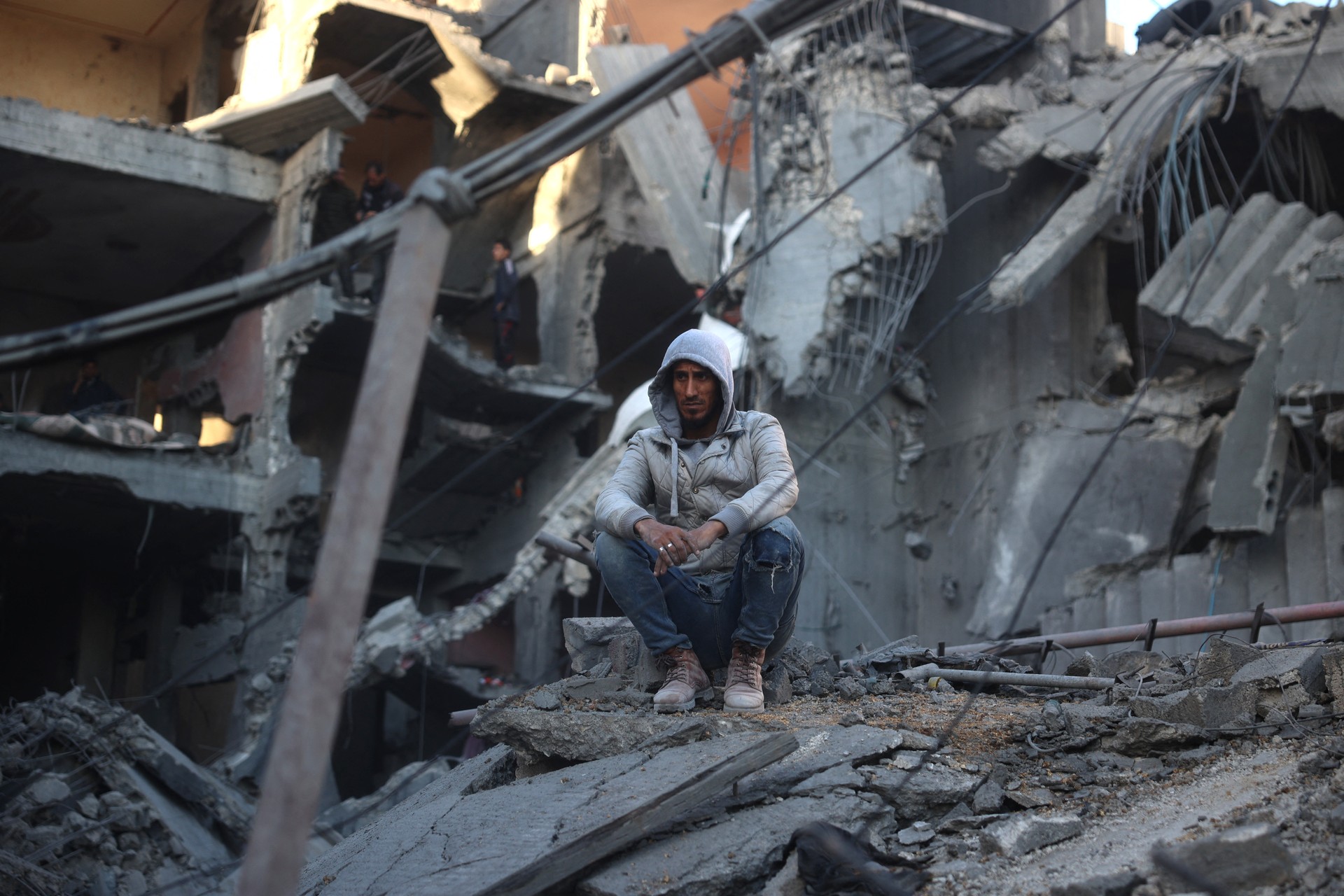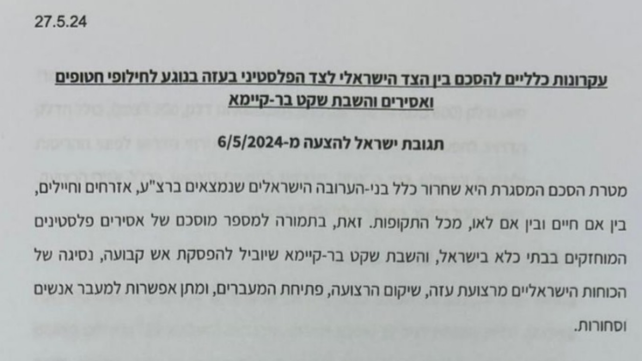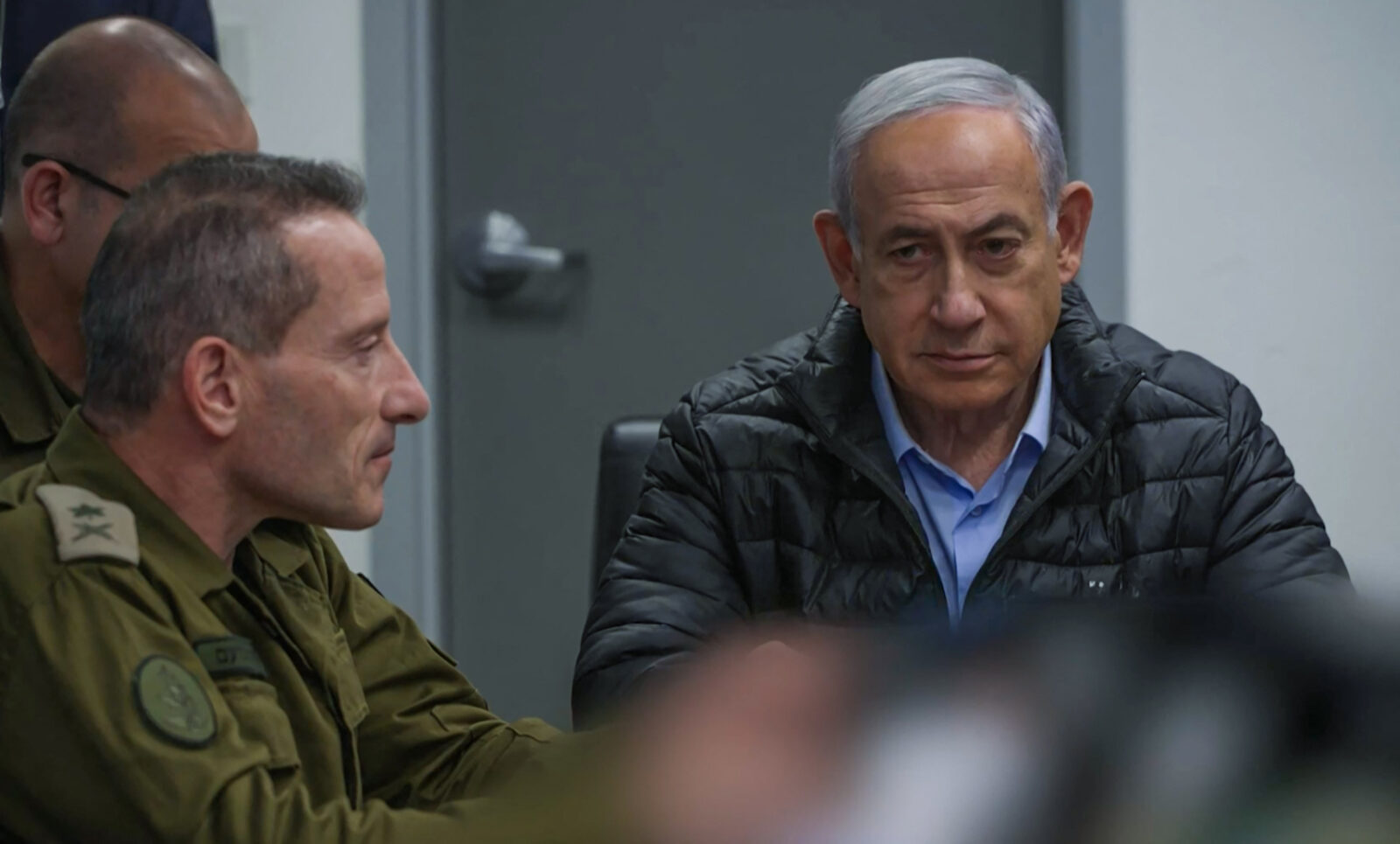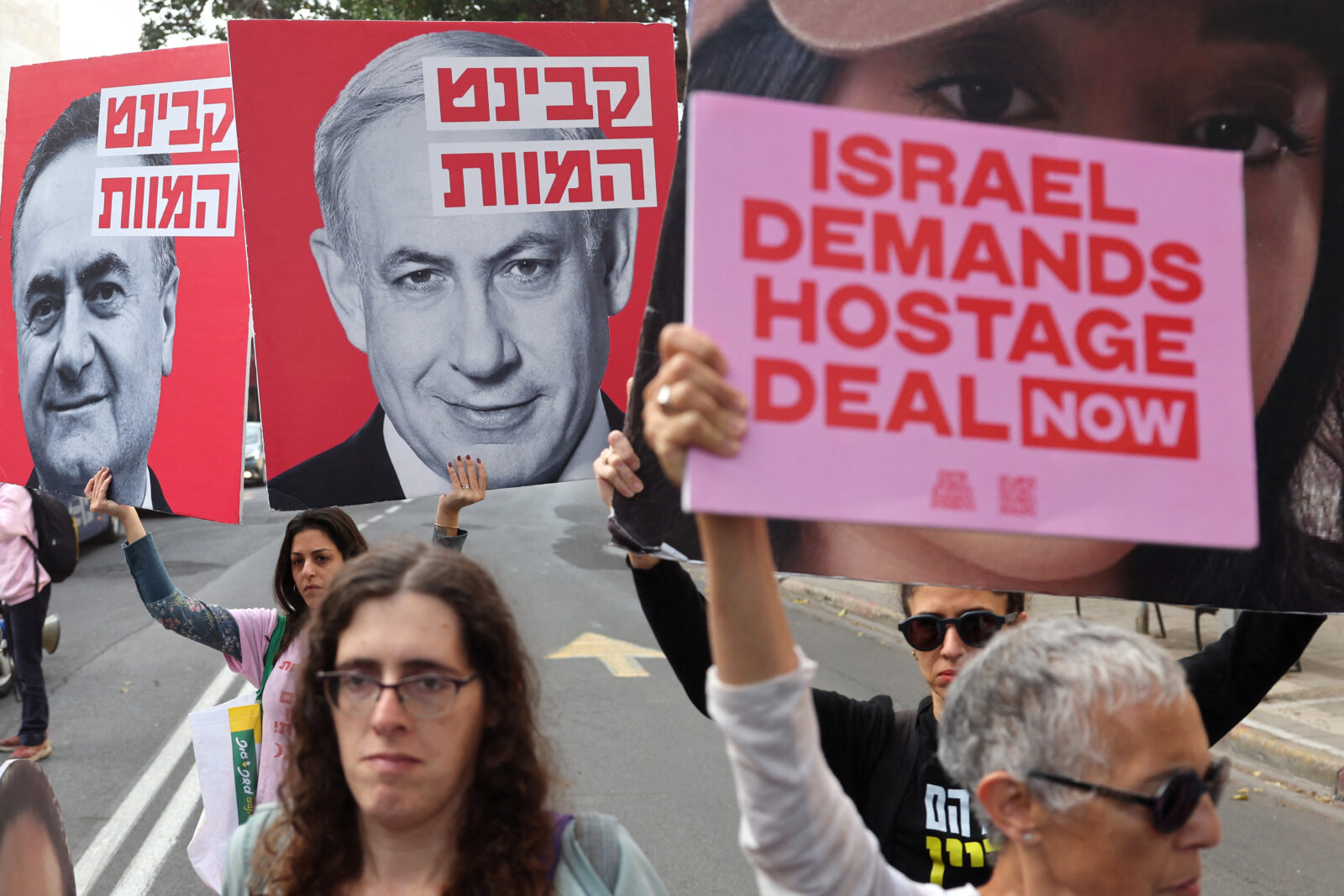
Israel’s public broadcaster, Kan, revealed Tuesday the contents of a document that forms the basis of negotiations with Hamas for a prisoner exchange deal.
The plan, approved by Israel’s Security Cabinet in May, had not been made public until now.
The document aims to secure the release of all Israelis held in the Gaza Strip—both civilians and soldiers, alive or deceased—in exchange for an agreed number of Palestinian prisoners held in Israeli jails. It also seeks to establish lasting calm, leading to a permanent cease-fire, the withdrawal of Israeli forces from Gaza, and the reconstruction of the enclave.

Israel would withdraw from the Netzarim Corridor in central Gaza and dismantle all military installations there, according to the document. A mechanism would also be created to prevent the return of armed groups to northern Gaza.
Israel would allow the entry of humanitarian aid, including fuel, to Gaza, beginning on the first day of the deal’s implementation, with a daily quota of 600 trucks, the report said.
The document specifies that Hamas will release Israeli captives in phases during the humanitarian stage of the agreement.
https://twitter.com/turkiyetodaycom/status/1876010533045805509
Initially, three civilian women prisoners would be released on the first day, followed by four on the seventh. Afterward, Hamas would release three captives weekly, prioritizing remaining women, including civilians and soldiers. Ultimately, the remains of deceased captives would be returned.
Israel has also demanded, based on recommendations from its negotiation team, a list of hostages to be released in the first phase before the agreement takes effect.
Kan noted that the document did not address whether Israel would withdraw from the Philadelphi Corridor, a strategic area along Gaza’s border with Egypt.
The proposal also includes deporting more than 50 Palestinian prisoners abroad or to Gaza.

Israeli Prime Minister Benjamin Netanyahu has approved the initiation of Gaza’s reconstruction during the first phase, including rebuilding infrastructure, clearing debris, and delivering at least 60,000 caravans and 200,000 tents to the enclave, Kan reported.
The second phase, Kan added, is described briefly, stating it would establish a “permanent halt to military operations and hostilities” without explicitly mentioning “the end of the war.”
Sources familiar with the negotiations said the gap between the document, approved by the Security Cabinet and submitted to mediators and Hamas in May, and the talks in Qatar remains narrow. However, the key difference lies in the uncertainty over how many captives in Gaza are still alive.
Mediation efforts led by the U.S., Egypt, and Qatar to reach a cease-fire in Gaza have so far failed due to Netanyahu’s refusal to halt the war.

Israel holds more than 10,300 Palestinian prisoners, while Hamas is said to be holding around 100 Israeli captives in Gaza. The group also claimed that dozens of captives had died in indiscriminate Israeli airstrikes.
The Israeli army has continued its operations in Gaza, which have killed nearly 46,000 people, mostly women and children, since a Hamas attack on Oct. 7, 2023, despite a U.N. Security Council resolution calling for an immediate cease-fire.
The International Criminal Court issued arrest warrants in November for Netanyahu and former Defense Minister Yoav Gallant on charges of war crimes and crimes against humanity in Gaza.
Israel also faces a genocide case at the International Court of Justice for its actions in Gaza.